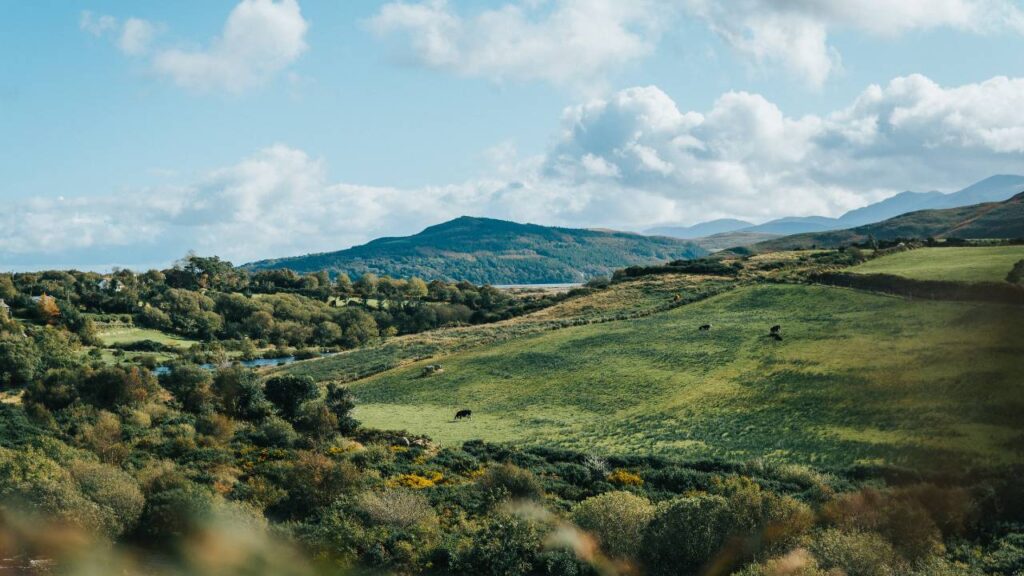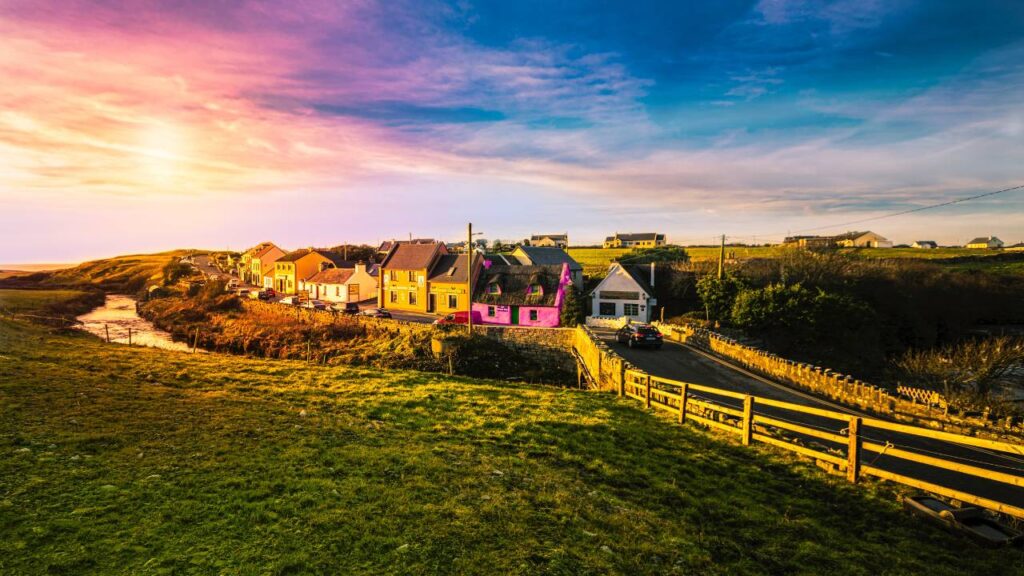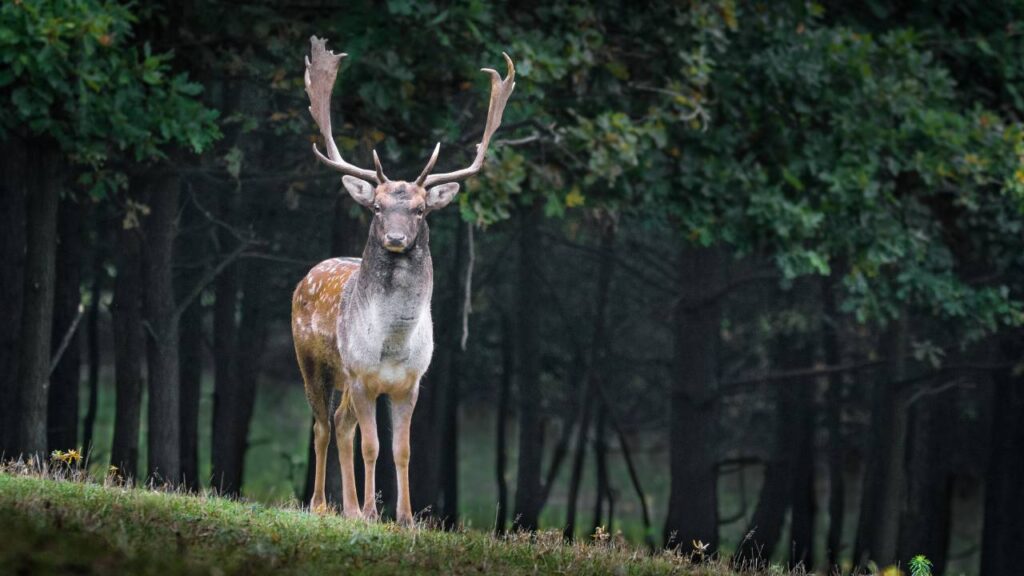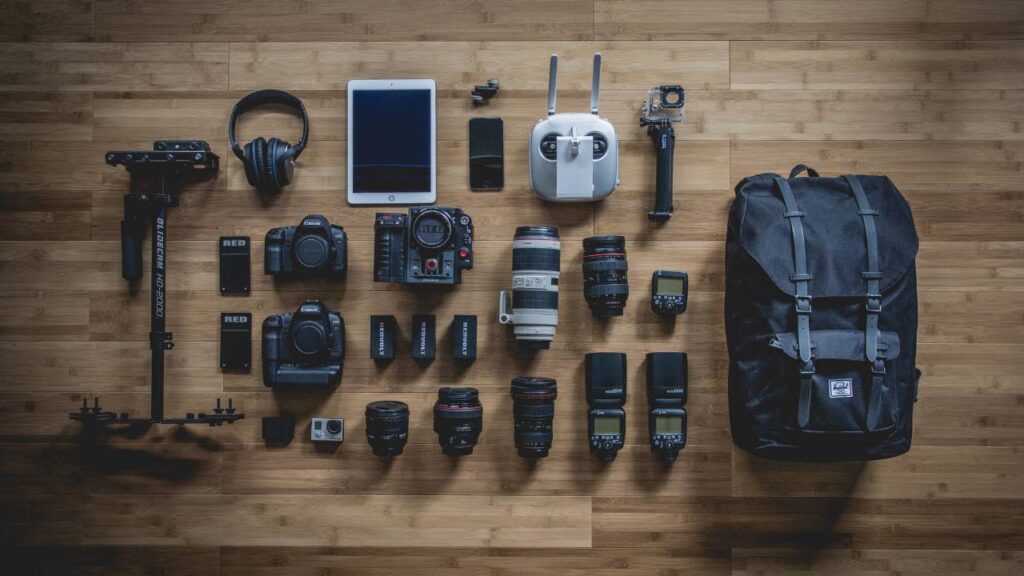Capturing Ireland’s Spirit: A Photographer’s Guide
Ireland offers a wealth of picturesque landscapes and unique cultural experiences that can inspire and challenge photographers. From the dramatic coastline to the rolling green hills and bustling cities, there is a rich tapestry of photographic opportunities waiting to be discovered.
This guide will provide insights and tips for photographers aiming to capture the true essence and spirit of Ireland, while considering the practical aspects of travelling and photographing around the country.
Essential Equipment for Capturing Ireland

A confident and knowledgeable photographer knows that the right equipment plays a crucial role in capturing the spirit of Ireland. To ensure clear and stunning images that represent the unique landscapes and lively culture, investing in essential gear is necessary.
First and foremost, a tripod is indispensable for photographing Ireland’s breathtaking landscapes and historic sites. It provides stability when shooting in windy conditions or during long exposures to capture the country’s dramatic skies and coastlines. Additionally, a tripod allows for more creative compositions, such as including the photographer in the frame to add a personal touch to the images.
Choosing the right camera is also crucial. While expensive and top-of-the-line cameras might provide excellent image quality, a photographer must consider factors like weight, durability, and suitability for the weather conditions commonly encountered in Ireland. A weather-sealed camera body with a robust build is ideal for withstanding the unpredictable Irish climate.
Lenses are another vital aspect of capturing the essence of Ireland. A versatile wide-angle lens is perfect for photographing the vast landscapes and can accommodate the country’s unpredictable weather by capturing sweeping vistas. Additionally, a telephoto lens allows the photographer to zoom in on distant details, such as historic ruins or wildlife.
Packing appropriate filters can significantly enhance the images taken in Ireland. A neutral density filter helps to control the exposure in bright conditions or when shooting long exposures. A polarising filter, on the other hand, can reduce reflections and enhance the natural colours in the landscape, making it an essential tool for bringing out the best in Ireland’s scenery.
Finally, don’t forget the accessories that will make the photographic process smoother. Sturdy and reliable camera plates allow for quick attachment and detachment of the camera to the tripod. Spare batteries, memory cards, and cleaning tools are essential for keeping the camera functioning at its best throughout the trip.
Unearthing Rich Photographic Heritage
Capturing Ireland’s spirit through photography is more than just snapping images of stunning landscapes and historic architecture. It also involves delving into the nation’s rich and diverse history, which adds depth and meaning to the photos. A well-informed photographer understands the importance of researching the backstory of locations. One helpful resource for background information is conducting general register office searches that reveal vital records and genealogical details.
Taking the time to learn about the history of a particular place can provide insight into the lives of those who lived there, as well as significant events that shaped the landscape. This knowledge can prove invaluable when composing photographs that truly embody the spirit of Ireland. Historical knowledge enriches the perspective of the photographer, allowing them to portray the location with respect and appreciation for its past.
Indeed, Ireland’s history is a tapestry woven with fascinating stories. For example, the country’s ancient monuments, such as the prehistoric Newgrange passage tomb, showcase the ingenuity and creativity of early civilizations. On the other hand, various castles and abbeys dotting the landscape act as visual reminders of the religious and political struggles that took place over centuries. Capturing these historical sites through photography allows the viewer to connect with Ireland’s vibrant past in a unique and evocative way.
Encountering Enchanting Landscapes

Ireland is a land of breathtaking beauty, with its green landscapes, never-ending coasts, and heartwarming locals. From the rugged coastline of the Wild Atlantic Way to the ancient limestone terrain of the Burren, this diverse country offers a multitude of opportunities for photographers to capture the essence of its natural allure.
In the southwest corner of Ireland lies the Dingle Peninsula, known for its ancient sites, sandy beaches, and vibrant culture. Often regarded as one of the most romantic destinations in Ireland, its rugged headlands and dramatic cliffs provide a stunning backdrop for landscape photography. With various viewpoints to choose from, photographers can capture an amazing array of shots during sunrise and sunset. The vibrant colours and unique patterns offered by the coastline will not disappoint, providing ample photographic material.
Another remarkable landscape in Ireland is the Burren, located in County Clare. This distinct area offers an otherworldly experience, as the vast, lunar-like expanse of limestone rocks stretches over more than 250 square kilometres. The Burren houses a vast range of flora and fauna, which has adapted to thrive in the harsh conditions. Photographers can take advantage of the contrasts between the sharp rock formations and soft, flowering plants, capturing the essence of this unique and enchanting landscape.
When capturing the spirit of Ireland, it’s crucial to choose the right locations and make the most of the light and weather conditions. Be it the dramatic shoreline of the Dingle Peninsula or the surreal landscape of the Burren, Ireland offers many arresting sights for landscape photographers. By exploring these astonishing locations, it’s possible to create powerful images that encapsulate the spirit of this captivating country.
Appreciating Ireland’s Natural Atmospheres

Ireland is a land blessed with a diverse and enchanting natural canvas, offering plenty of photographic opportunities. One aspect that stands out for many photographers is the picturesque mountains, which provide a majestic backdrop for beautiful landscapes and stunning views. The island is home to a wide range of mountain ranges, such as the MacGillycuddy’s Reeks in County Kerry, the Twelve Bens in County Galway, and the Mourne Mountains in County Down. These striking ranges offer both challenging hikes and visually spectacular vantage points for photographers.
Another significant element contributing to Ireland’s charm is the Atlantic Ocean. The rugged coastline stretches for over 2,500 kilometres, encompassing dramatic cliffs and secluded beaches. For example, the Cliffs of Moher in County Clare and the Slieve League Cliffs in County Donegal are iconic locations with jaw-dropping cliffside views of the ocean. Moreover, the Wild Atlantic Way, a 2,500-kilometre-long driving route that follows the Atlantic coastline from County Cork to County Donegal, is perfect for capturing some astonishing seaside vistas. Photographers should also be prepared for Ireland’s changing weather, as it can bring dramatic light conditions, adding to the beauty of the captured landscapes.
Ireland’s diverse natural atmospheres also extend to its numerous lakes, rivers, and forests. The renowned Ring of Kerry, a 179-kilometre-long circular tourist route in County Kerry, is famed for its stunning lakes and lush green landscapes- an ideal spot for photographers to practise their skills amid a serene setting. Similarly, Ireland is home to ancient forests like Killarney National Park in County Kerry and Glendalough in County Wicklow, which offer thick canopies, reflective lakes, and lush foliage to compose exquisite photographs.
Experiencing Wildlife and Local Life
Ireland offers a unique opportunity to immerse yourself in both its breathtaking landscapes and rich cultural experiences. When it comes to capturing the spirit of Ireland through photography, focusing on the wildlife and local life can provide an authentic glimpse into the heart of this enchanting country.
With over 12 years of experience in the field, British wildlife photographer Chris Martin has shared some valuable tips and techniques to elevate your photography skills in an Irish setting. For instance, when photographing local wildlife, understanding your subject is key, whether it’s learning about their habitat, behaviour patterns or how they interact with their surroundings.
Ireland is renowned for its diverse wildlife, from the majestic red deer in Killarney National Park to the elusive hares found on the rugged landscapes of the Burren. To further enhance your wildlife photography, consider visiting some of these natural habitats at dawn or dusk, when animals are most active and the lighting adds a magical touch to your images.
In addition to capturing wildlife, engaging with the Irish locals is paramount in uncovering the true essence of Ireland. Within the rural areas, you will find charming pubs where traditional music fills the air, adding to the overall atmosphere. Seize the opportunity to document these moments, showcasing the friendly faces of the locals and the colourful interiors that make Irish pubs so famous.
Ireland’s rich cultural heritage can also be explored through its ancient ruins, spectacular castles and historic monuments, which provide a stunning backdrop for your photographs. Remember to be mindful when taking pictures in historical or sacred places, respecting the cultural significance and privacy of those living and working in the area.
Mastering the Craft of Photography

A proficient photographer possesses a balance of creativity and technical expertise. For those looking to diversify their skills and become a professional videographer, capturing Ireland’s spirit requires a similar blend of artistic vision and technical knowledge. Still, when it comes to capturing the island’s essence through still images, it is essential to apply both aspects of the craft to produce photos that reflect the country’s charm and beauty. Devising an effective plan and using the right techniques can help photographers make the most of their journey around Ireland.
Developing a keen eye for composition is crucial in capturing Ireland’s picturesque landscapes. Understanding the rule of thirds and applying it in various situations will enhance the visual appeal of the photographs. By placing the subject along the imaginary lines or their intersections, images will have a more natural and captivating appearance. Positioning the horizon line carefully, either in the upper or lower third of the frame, can emphasise different elements of the Irish countryside.
When photographing Ireland’s stunning landscapes, it is vital to have good control over exposure settings. Playing with aperture, shutter speed, and ISO can help the photographer achieve optimal exposure and depth of field. Using a smaller aperture (higher f-number) will provide a deeper depth of field, ensuring that both foreground and background elements are sharp and focused. A tripod is invaluable in such scenarios, allowing the photographer to use longer shutter speeds and avoid camera shake.
Lighting conditions can significantly influence the outcome of a photograph. It is essential to be mindful of the time of day and weather conditions when shooting Ireland’s landscapes. The golden hours, occurring shortly after sunrise and before sunset, provide soft and warm light that enhances the colours and textures in the scene. Overcast days, while often perceived as less than ideal, offer diffused light that can be beneficial in certain situations, such as capturing the moody atmosphere of Ireland’s coastline or ancient ruins.
Flexibility and adaptability are essential traits for a photographer exploring Ireland. The country’s weather is famously unpredictable, which means that capturing the perfect shot may require patience and resilience in the face of changing conditions. Being open to adapting plans and seizing opportunities as they arise will ensure that the photographer comes away with a unique and memorable collection of images.
Comfortable Accommodation Options and Locations
Ireland is a beautiful destination for photographers, offering a wealth of breathtaking landscapes and historic sites. When planning a photography trip to Ireland, it is essential to consider comfortable and convenient accommodation options near popular photography spots. There are various types of accommodations to choose from, including traditional bed and breakfasts, hotels, and self-catering cottages.
In Kerry, known for its stunning scenery, photographers can find a range of welcoming B&B’s and rural locations where they can connect with locals and get helpful advice on photographic locations. Staying in smaller bed and breakfasts allows for a more intimate experience of the unique Irish culture while providing the necessary comfort after a long day of capturing the beauty of the area.
Another popular destination for photographers is Temple Bar, Dublin. While the area is famous for its vibrant nightlife and historic landmarks, it also offers a wide range of accommodation options, such as hotels and hostels, catering to different budgets and preferences. The central location of Temple Bar makes it convenient for exploring the city and capturing memorable images.
For those wishing to stay in more secluded and remote locations for capturing landscapes, self-catering cottages are an excellent choice. These cottages can be found throughout Ireland, including Kerry, and provide a cosy and private space for photographers who want a home away from home while exploring the picturesque surroundings.
Conclusion
Ireland presents a wealth of opportunities for photographers seeking to capture its spirit. From the dynamic landscapes to the rich culture and history of its people, there is no shortage of inspiration to be found on the Emerald Isle.
By adopting a creative approach and being open to the unique qualities of the country, photographers will be well-equipped to create a truly memorable collection of images that encapsulate the essence of Ireland.